I am bordering on my 20th anniversary of playing Magic: the Gathering. That’s a scary thought and something that has come far too fast. But being the game design aficionado and historical junkie that I am, I instead chose to take the existential dread of growing older with my favorite game and turn it into the inspiration for an article.
This month marks the tenth anniversary of the creation of Modern. While I am not an avid player, it was harrowing to realize that I have been witness to the birth, history of bannings, and current status of the format. Once I had come to terms with this anniversary, I began thinking about how much the game has changed in the last ten years. That metal list became a physical list and as I put pen to paper, I discovered a lot of things that I am surprised did not exist a decade ago.
The growth of the game is fascinating to me and in some cases happened so gradually that I didn’t even notice the titanic shifts until much later. Today, I wanted to take some time to go over aspects of Magic: the Gathering that are commonplace now but didn’t exist in 2011, and in some cases are far more recent than even that. Hopefully this trip into Magic’s past can be entertaining for long-time players and educational for all the players so new that they know nothing but the current status quo.
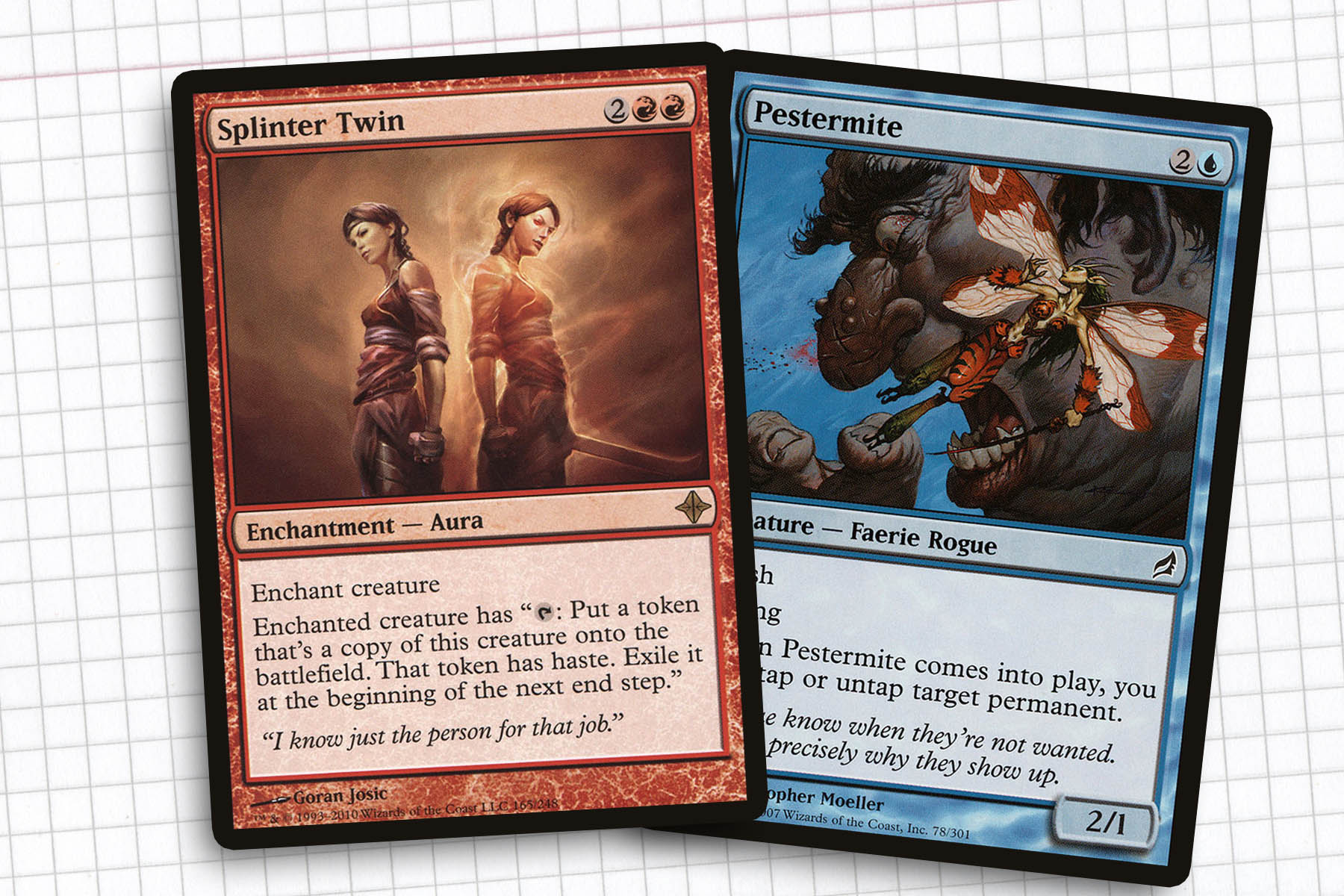
The Modern Format
Let’s start with my original jumping off point, Modern. I will not pretend to be a historian—I strongly recommend that anybody who is really interested in the early days of Modern check out this two-part podcast put out by Dominaria’s Judgment two weeks ago. As a bystander to the format, I can say that before Modern existed, the Extended format—which encompassed anywhere between the previous 4-7 years of Magic—was much maligned. There was a lot of talk about how to replace the format and even an attempt to create what was essentially “Double Standard,” a rotating format consisting of the last four years of Standard. But ultimately in time for the 2011 Community Cup, we got the format that would become Modern.
When the format was announced, I recall that the buzz was immense. The format was officially codified when Modern replaced Extended for Pro Tour Philadelphia in September 2011. The idea of a non-rotating format that encompassed approximately half of Magic at that time was something that got a lot of brewers excited. I remember doing a lot of in-store tournaments at the time, specifically because the format had not been solved and dozens of decks felt viable.
It’s funny to see where the format has landed now. Modern is as popular as ever, but the size of the card pool has caused Wizards to start facilitating new ideas along a similar line. It’s weird to think that we are on the verge of Historic being the format du jour for players that now come out of smaller formats. Ultimately, I don’t know if we will ever have a tournament format as immediately successful as Modern.
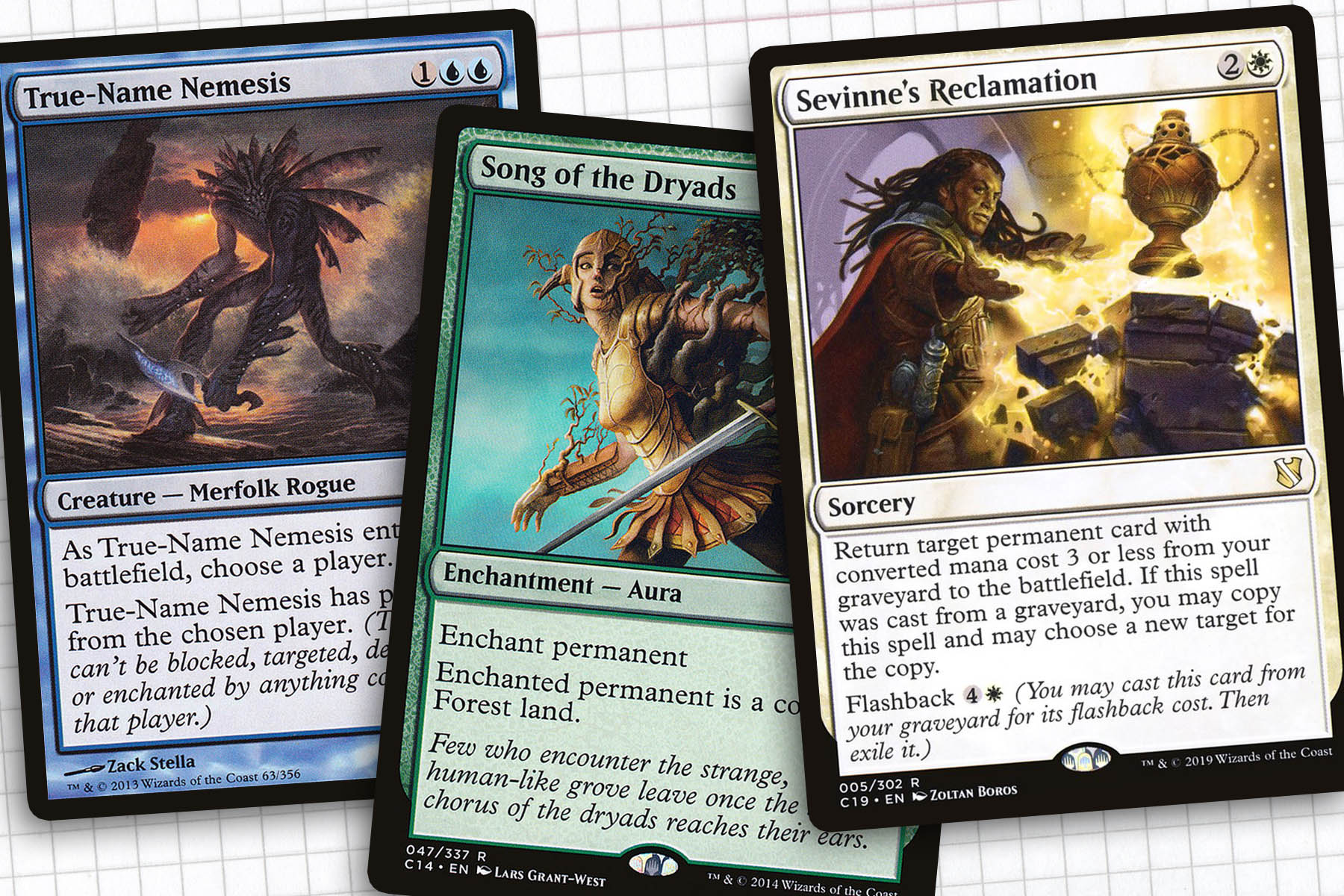
Annual Commander Products
If I’m allowed to be pedantic, technically annual Commander products did not exist in 2011. I should know, I’m a bit of an expert on Commander products. While, yes we had seen the first printing of Magic the Gathering: Commander decks, they were conceived, designed, and printed as a one-off summer product in 2011. Back then, Wizards would basically highlight a casual four to five player format every summer. One year we had Planechase, another was Archenemy. The Commander release in 2011 was so successful that Wizards realized that they needed to return to the product as quickly as possible.
Due to the way that sets are designed, in 2012 we had a Commander’s Arsenal instead of a full product line, and it wouldn’t be until 2013 that we would ultimately get the first of an annual product release. Of course, nowadays we get a commander product in some form with pretty much every Standard-legal set. This might be the most noticeable difference for a time traveling Magic player coming from 2021.
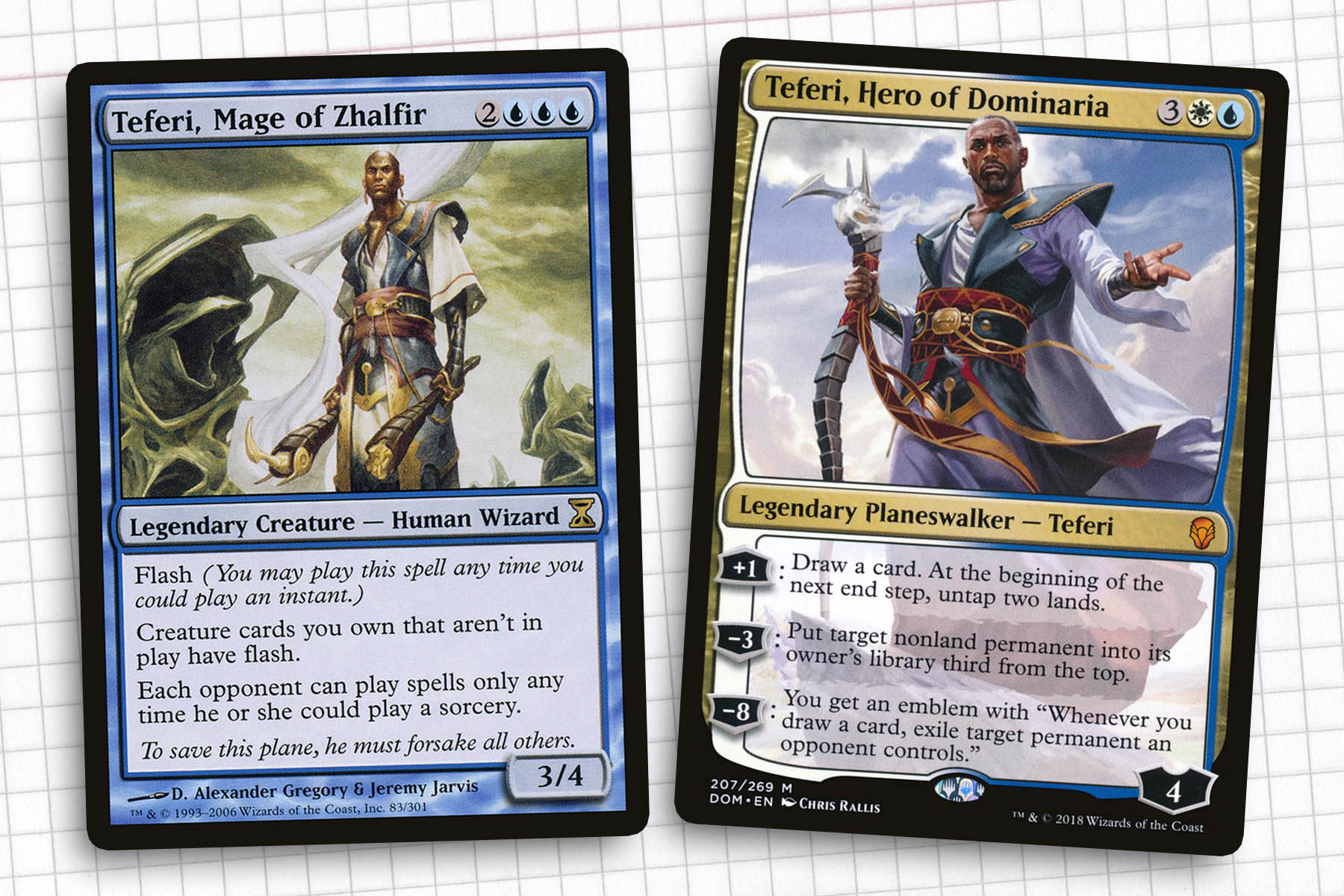
Planeswalker—Teferi
My life has not been irreversibly damaged by the existence of Teferi as a planeswalker. For all of those who have lost track of time or are newer to the game, Teferi was a legendary creature during the Time Spiral block in 2006. We did not have a planeswalker card for the character until Commander 2014.
The conceit at the time was that by putting them into Commander products, Wizards believed that they could show off older planeswalkers and display a fraction of the pre-mending abilities that they had. Teferi survived into modern day in the story and has become synonymous with the game as a powerful piece of Standard. I think of him simply as a character that shows up on above-average cards, of which I see very sparingly.
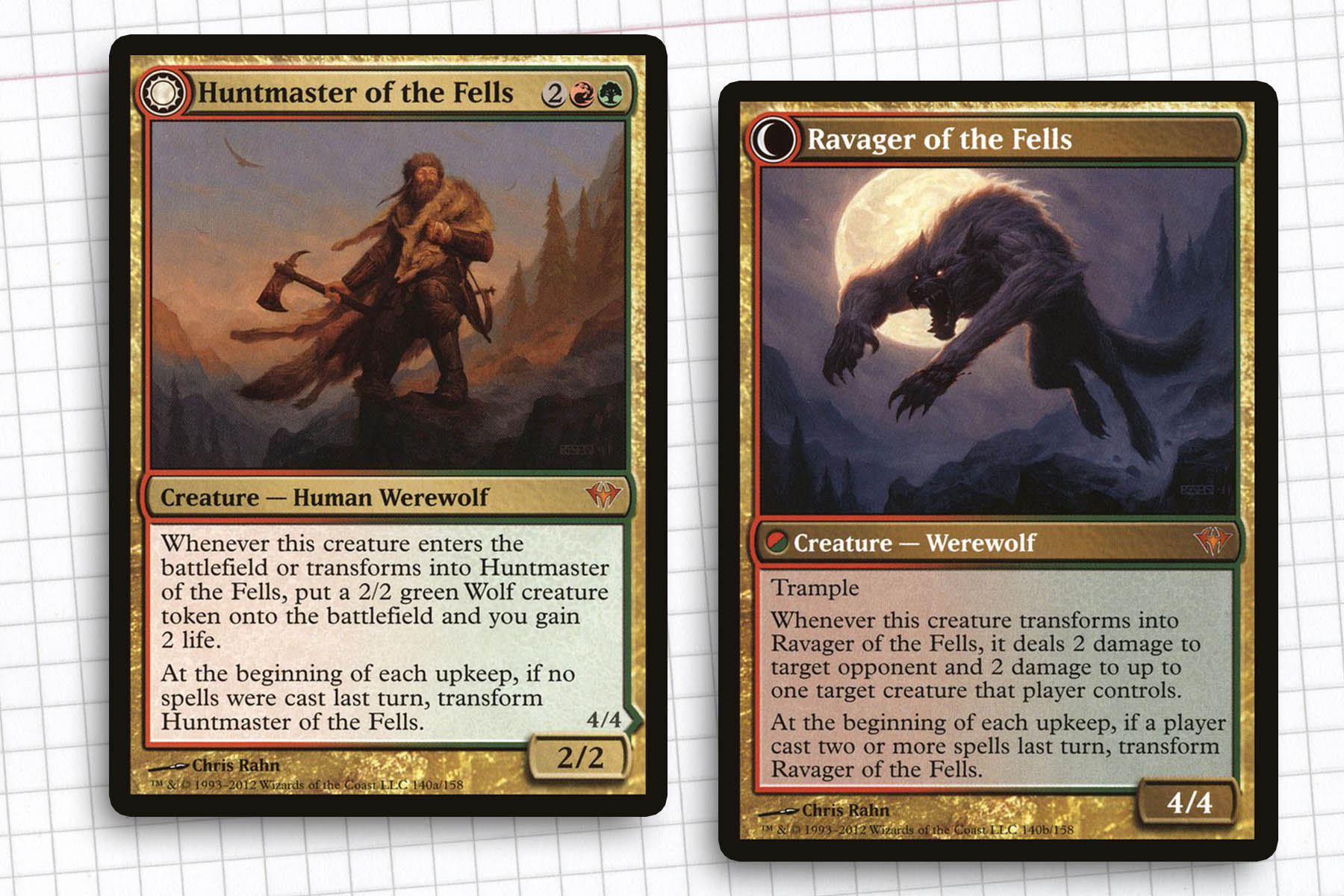
Double-Faced Cards
With the way that Standard has looked for the last year, it’s probably unusual to think that there was a time when cards only had rules text on one side. When the concept was announced, double-faced cards were highly contentious. I remember being pessimistic about the idea, because it felt like a bridge too far. But the selfish desire to see werewolves be a successful tribe in the game made me willing to see what Wizards had cooked up. Like many of the people at the Innistrad prerelease, double faced cards were sold the second you held one in your hand and realized that your game piece now could be two entirely different things as opposed to the old method that we had seen in Kamigawa.
All these years later and I think the double faced cards were one of the best additions to Magic design space that has occurred since the creation of equipment. Whereas equipment was trying to fix a problem with auras, double faced cards allowed for cards to have dynamic designs that separately allowed for two distinct states for any given game piece. Creatures have become planeswalkers, lands have become creatures, we have cards that can be either a spell or a land, and so many more iterations on these designs. Possibly the deepest area for design space, I’m happy Wizards was willing to take the risk.
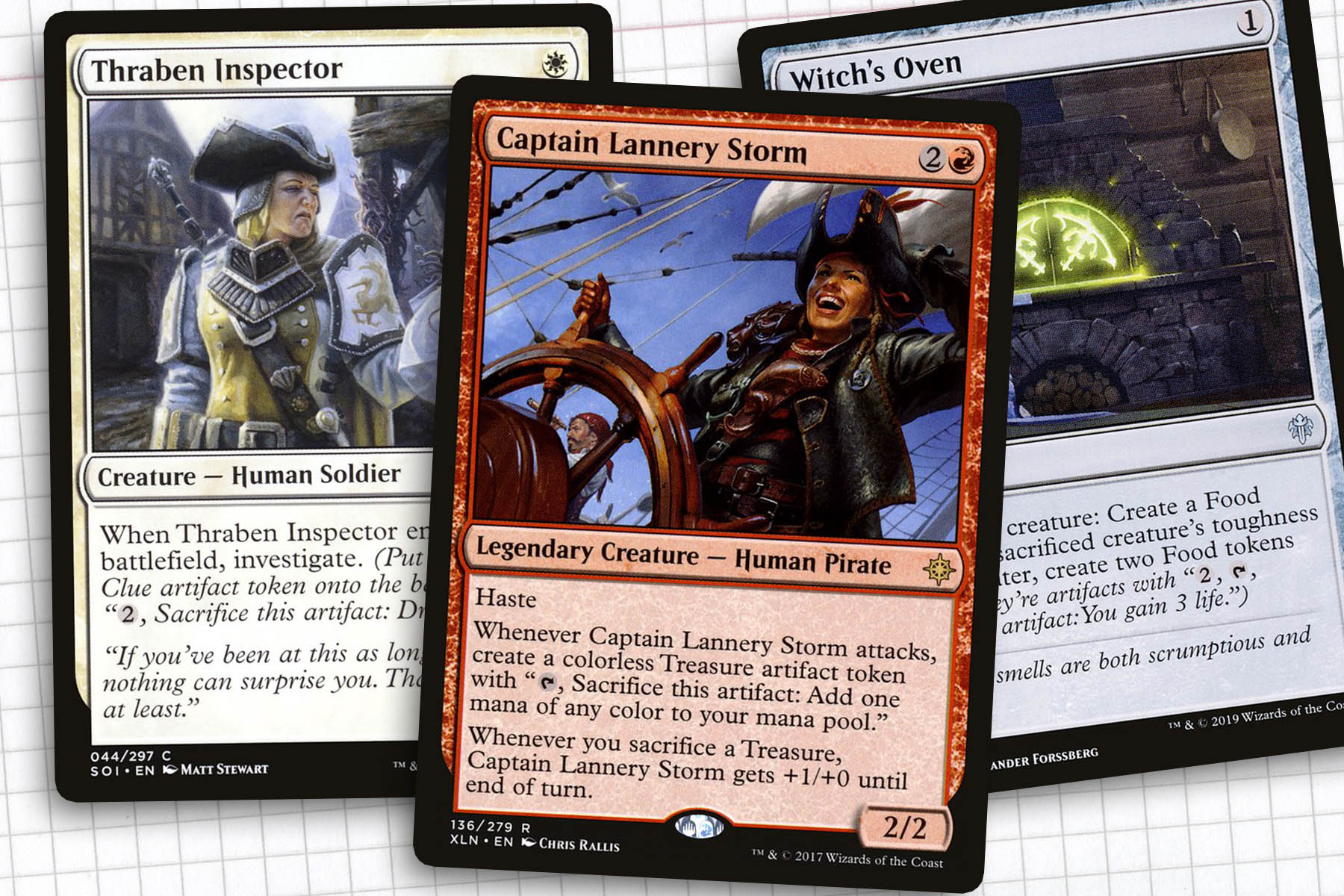
Non-Creature Tokens
For all of the hate Ixalan block gets, one of the most significant things to come out of it was the creation of treasure tokens. By 2017, we had seen gold tokens in Born of the Gods, but they were used sparingly and didn’t balance well once improvise came into existence. Treasure was balanced by requiring tapping, taking notes from Lotus Petal. Since then, the token has been adopted into just about every Magic product imaginable.
From a Commander player perspective, they have basically become their own archetype; invigorating white through Smothering Tithe and giving the world Dockside Extortionist and Hullbreacher. For all of the “mistakes” that might have been made with some of the cards related to treasure, I think they are overall good, granting temporary mana, artifact tokens, and sacrifice outlets to decks that need them.
But the last five years have also been book-ended by the existence of clue in 2016 and food tokens in 2019. These three non-creature tokens have become an ever-presence in many of the product releases that we have seen, especially in the last two years. I expect that Modern Horizons 2 highlights like Academy Manufactor, Lonis, Cryptozoologist, and Tireless Provisioner are signs of things to come and all three of these tokens are going to see endless support over the coming years.
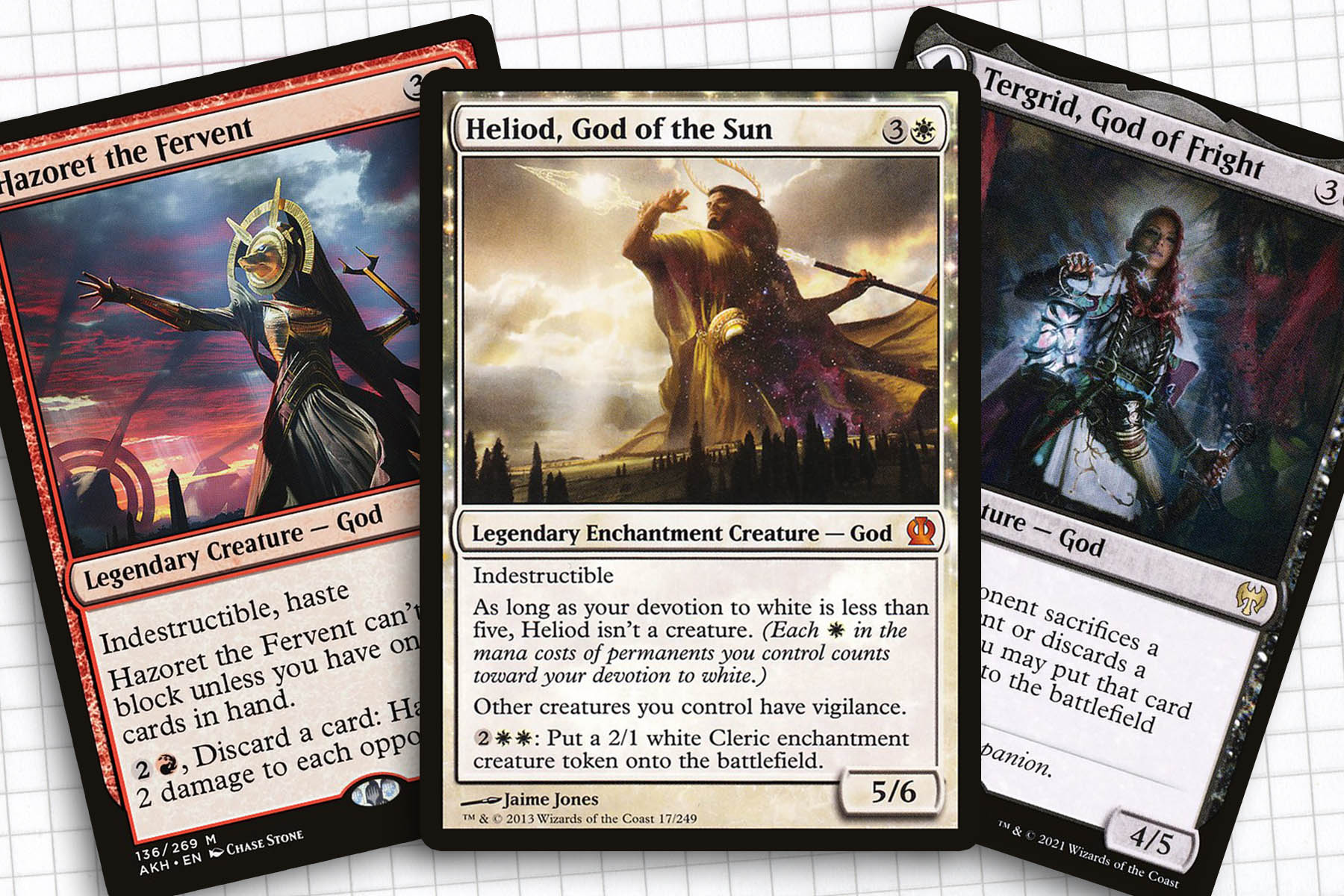
Gods
The god creature type was so notable that I remember where I was standing the first time that it was confirmed they would be coming to Magic. We were going to the greek-inspired plane of Theros and gods are pretty closely associated with Greek mythology. For fairly obvious reasons, putting the creature type “god” onto cards was reasonably understood to be controversial in 2013. We’ve seen god cards in other games, such as Yu-Gi-Oh or Pokemon, without those games being negatively affected. But when we were told that Theros would be a world of gods it was pretty exciting.
As we have explored the creature type from plane to plane, it has always been interesting to see how each of those worlds has defined what a god is. To this point I no longer try to collect one card of each god. It’s become too unmanageable. But the ability to codify what the deities of different worlds look like has been probably as impactful as allowing planeswalkers to exist as a card. Just on a smaller scale.
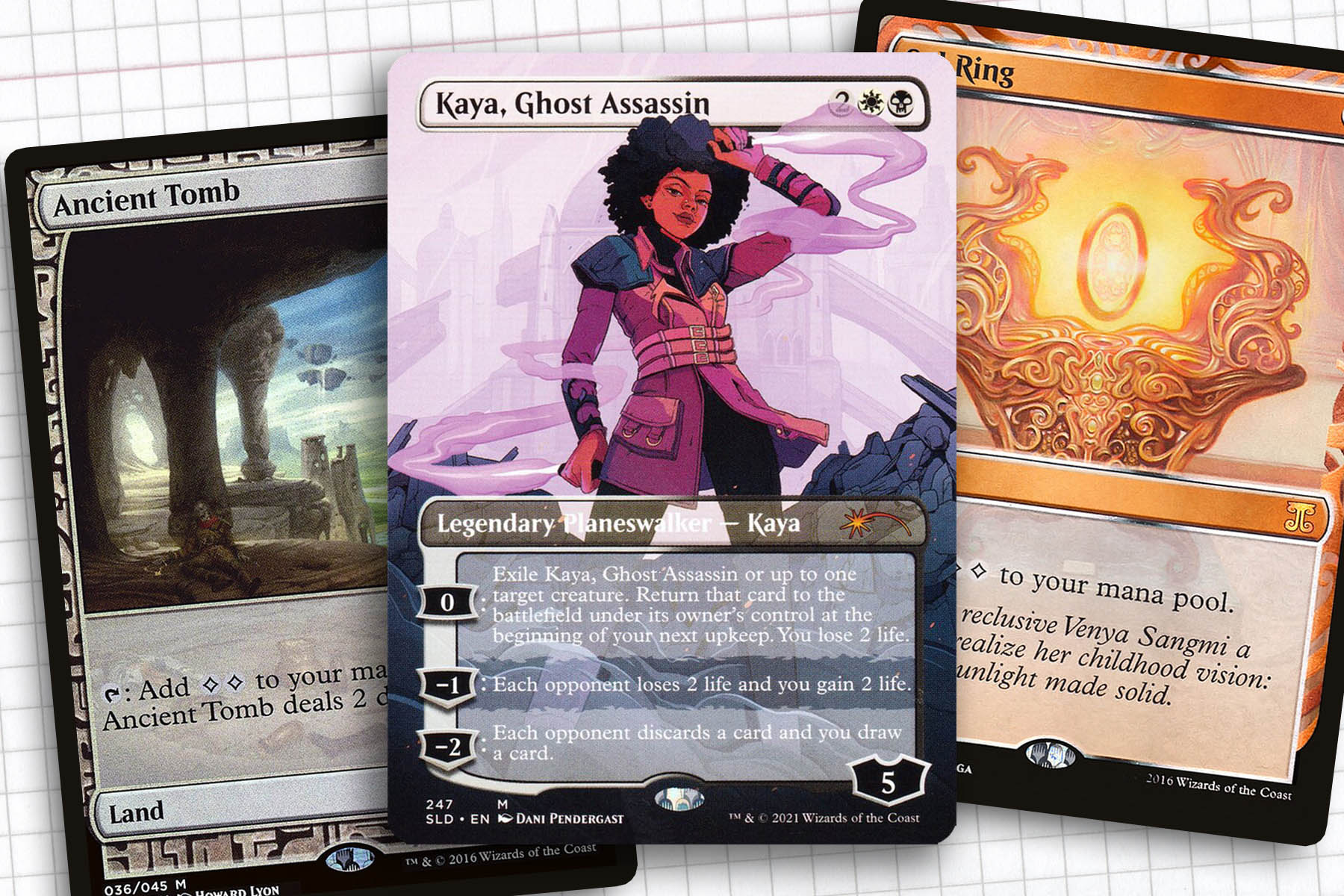
Masterpieces Frames
Lastly, we have one of the most impactful parts of the era of Magic that we are currently living through. Secret lair drops and their convention-defying nature would probably not exist if the Zendikar Expeditions had not been a success during Battle for Zendikar. From there, the limits of the card frame were slowly expanded upon year after year until we have hit the point where a Magic card looks more like a heavy metal poster than a functioning game piece.
Magic has been playing with the card frame for most of its existence, but five years ago the current state would have seemed impossible. I have never been to evoke the phrase, “that doesn’t look like a Magic card,” but I will admit that at some points we have seen designs that certainly do not read a Magic cards at first glance. I think these changes have been good for collectors, further creating pieces of art out of game pieces. My only complaint? I wish we saw some treatments more than once, as I would love to see the Expedition frames on more lands or the comic book treatment from Ikoria used for a wider range of creatures.
For all the highs and lows and inevitable changes that have occurred over the last ten years, I think the game is in a much better place and is thriving. Several of these changes were facilitated by printing technology ramping forward, allowing for much more accurate print precision and die cutting. Others came from not allowing past taboos to dictate the future of the game. And design principles expanded to answer the needs of sets and the color pie. I look forward to seeing where the game is in another ten years. Until next time, thanks for reading.
Ryan Sainio is a Graphic Designer who writes about EDH and the EDH community. He has been playing Magic: the Gathering since 7th Edition in 2002 and values flavorful and fun gameplay over competitively optimized decks.

